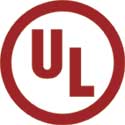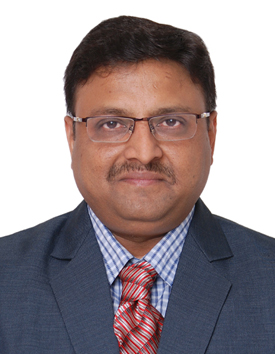|
Invited Speakers & Panel Experts : Presentation Abstracts
 |
Mr. Hiten Bheda
Managing Director
Vinit Performance Polymers Pvt Ltd., Mumbai
Converting Performance Polymers Into Implants /
Devices
Engineering and high performance
plastics have been used in life sciences as materials
of construction for Medical Devices, Instruments,
Sizing Specimens and Handling Equipments.
These materials are available as
stock shape like Rods, Plates and Blocks which can be
converted into desired form using numerical Machining
Techniques.
As per required Designs, Selection,
Criteria is Driven by Material Attributes that include
Mechanical, Thermal, Electrical, Electrical,
Tribological, Bio-Compatibility, etc. and Compliance
to Regulatory Requirements, Presentation in Context of
Current Scenario and way Forward gives glimpse on the
subject. |
|
 |
K. R.
Navaneethakrishnan, M.Sc (PhD) Assistant Director
Dr J. S. I. Rajkumar, PhD Toxicologist
Dr B. Rajan, PhD Toxicologist
GLR Laboratories Pvt. Ltd., Chennai.Workshop On
Biocompatibility : Updated Information, Clarifications
and Recent Advancements
Biocompatibility training will
deliver the updated information, clarifications and
recent advancements on ISO 10993 and FDA guidance
updates for compliant biocompatibility strategies by
incorporating several new considerations, including
the use of risk based approaches. This training
program also provides an unique opportunity to
understand the policies, laboratory practices, and
challenges faced in broader disciplines including in
determining the relevant biocompatibility endpoints
for an evaluation (test selection (if needed);
considerations for use of animal testing vs. in vitro
testing; sample preparation of nano scale, bio
absorbable, and in situ polymerized materials;
evaluation of color additives); general
biocompatibility testing considerations, including
test article preparation; specific considerations for
the following testing specially for devices utilizing
nanotechnology. |
|
 |
UL India, Banglore
Validation Needs For Packages Of Medical Devices.
According to the World Health
Organization (WHO), healthcare associated infections (HAIs)
are the most frequent adverse event in the delivery of
healthcare services worldwide, affecting hundreds of
millions of patients each year. Ensuring the sterility
of medical devices is an important tactic in the
overall effort to reduce the rate of infections in
hospitals and other healthcare settings.
Effective packaging and packaging
materials are essential to help preserve the sterility
of medical devices. However, the integrity of
packaging material can degrade over time due to
environmental exposure, or be compromised through
normal handling encountered during storage and
transportation. As a result, rigorous testing of
packaging systems used with medical devices is
mandatory in most major jurisdictions around the
world.
Regulators in the EU, the U.S. and
other major healthcare markets have implemented strict
requirements for packaging systems and packaging
materials used to preserve the sterility of medical
devices, protect their functionality and retain their
biological safety. In the EU, medical device
directives and regulations mandate that medical device
packaging materials and systems conform with the
requirements of the ISO 11607 series of standards,
Packaging for terminally sterilized medical devices.
And in the U.S., the FDA accepts evidence of
compliance with ISO 11607 in support of 510(k)
applications for the approval and registration of
medical devices.
In this UL presentation, we’ll
discuss the requirements and validation testing
methods applicable to packaging systems and/or
materials used in conjunction with sterile medical
devices. Beginning with a review of the importance of
packaging validation for medical devices, the
presentation then presents a summary of ISO 11607, the
standard for packaging materials used for sterilized
medical devices, and provides details on validation
testing as prescribed in the standard. The
presentation concludes with some recommendations for
manufacturers on the selection and evaluation of
suitable packaging and packaging materials for medical
devices. |
|
 |
Mr. Umang Shah
National Sales Manager
Clariant Chemicals (India) Ltd., Ahmedabad
POLYMER COMPOUNDS & MASTERBATCHES - HELPING YOU
DELIVER SAFE TREATMENTS GLOBALLY
• Key differentiators for Medical Masterbatch
compared to conventional MB.
• Regulatory requirements
• Medical & Pharma MB overview for Drug Delivery,
Invasive, Diagnostics and Pharma Packaging
• Various Innovative solutions of Masterbatch and
compounds from CLARIANT.
• Various Applications
• CLARIANT’s overview and focus for the Medical &
Pharma Segment. |
|
 |
Mr. Siddharth Jain
CEO and Chief Regulatory Advisor
Symbiorph Clinical Trialogy, AhmedabadGlobal
Product Registration-Medical Device
Despite the significant presence of
domestic players in the industry, the Indian medical
devices market is still largely dependent on imports.
However, ‘Local innovation’ by MNCs
as well as domestic players is expected to drive
indigenous manufacturing and lead to rapid growth of
exports.
Export of medical devices have
grown at a rate of around 12% over the past five
years, reaching a value of USD 1.2 billion in 2014.
This indicates strong performance of the domestic
manufacturing industry although limited in size. The
Consumables and implants segment accounts for more
than 40% of exports from India with USA being the
leading destination of export of medical devices.
In the recent years, MNCs and
domestic players have designed and developed India
specific medical devices in their R&D centers located
in India. These products have been designed to suit
the needs of the developed market – in terms of
product specifications and pricing. Interestingly,
these products have also created demand in other
developing markets outside India.
Challenges across multiple
dimensions that were disablers to the export of
indigenous medical devices need to be addressed. These
include poor knowledge for country specific regulatory
requirement, poor regulatory documentation and
providing the Marketing Authorization to single
distributors are some specific road blocker for Indian
medical device export industries. |
|
 |
Dr. Chirag Patel
Assistant Professor, Microbiology
Shree Krishna Hospital, KaramsadBiofilms in
Indwelling medical devices
The Indwelling medical devices are
used frequently in patients typically critical
patients in multiple ways for multiple purpose and
those devices along with aiding the treatment, also
sometimes becomes biggest source of infection and
becomes challenge for the therapeutic world to be
treated. The present work and knowledge about the
indwelling device associated infection with the focus
on biofilms are the key emerging issue to be primarily
addressed by device manufacturing industry. The
development of newer preventive technology in device
manufacturing industry will need an eyesight to be
developed in the manufacturers. In the emerging world
of antimicrobial resistance in potentially infectious
healthcare associated pathogens, to prevent them to
harm further in patients and control this challenge
before it becomes threat to mankind, its indeed
research done from manufacturers are of great future
value. |
|
